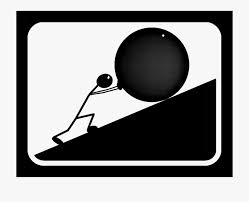The Art of Persuasive Communication in Sales and Marketing 🎨🌟
Hello everyone, AckySHINE here! As a Communication and Interpersonal Skills Techniques expert, I am thrilled to share my insights on the art of persuasive communication in sales and marketing. 🤝💼
-
Understand your audience: One of the key aspects of persuasive communication is knowing who you are talking to. By understanding your target market, you can tailor your message to resonate with their needs and desires. 🔍👥
-
Use the power of storytelling: Storytelling is a powerful tool in sales and marketing. By sharing relatable anecdotes, you can captivate your audience and evoke emotions that will make your message more memorable. 📚📢
-
Build trust and credibility: Trust is essential in any business relationship. As AckySHINE, I recommend establishing credibility by backing your claims with evidence, testimonials, and case studies. This will strengthen your persuasive communication efforts. ✅🔑
-
Highlight the benefits: Instead of focusing solely on the features of your product or service, emphasize the benefits that your customers will gain. By showing them how your offering can solve their problems or improve their lives, you make your message more persuasive. 💡🌈
-
Use persuasive language: The words you choose can greatly impact the effectiveness of your communication. Incorporate strong and positive language to convey confidence and enthusiasm. 🗣️✨
-
Active listening: Persuasive communication is not just about talking; it's also about actively listening to your customers. By paying attention to their concerns and needs, you can tailor your message to address them directly. 🎧👂
-
Mirror and match: Mirroring and matching your customer's body language, tone, and pace of speech can establish rapport and make them feel more comfortable. This technique creates a sense of unity and connection. 🙌🌟
-
Use visual aids: Visual aids such as infographics, videos, and images can greatly enhance the persuasiveness of your message. They help to convey information in a more engaging and memorable way. 📊📸
-
Overcome objections: In sales and marketing, objections are bound to arise. Instead of shying away or becoming defensive, embrace objections as an opportunity to address concerns and provide solutions. 🙋♂️❓
-
Create a sense of urgency: By highlighting limited-time offers, exclusive deals, or scarcity of your product or service, you can create a sense of urgency that motivates customers to take action. 🕒⏳
-
Tailor your approach: Different individuals respond to different communication styles. As a persuasive communicator, it's important to adapt your approach to suit the preferences and personalities of your audience. 🤝📝
-
Use social proof: People are more likely to be persuaded by others who have had positive experiences. Incorporating customer testimonials, reviews, and endorsements can help to build social proof and increase credibility. 👥🌟
-
Be confident and enthusiastic: Your level of confidence and enthusiasm can greatly influence how persuasive your communication is. By projecting confidence in your product or service, you inspire trust and belief in your audience. 💪😄
-
Follow up: The art of persuasive communication doesn't end when the initial conversation is over. As AckySHINE, I recommend following up with your potential customers to reinforce your message and address any further concerns they may have. 📞📋
-
Continuously learn and adapt: The world of sales and marketing is ever-evolving, so it's essential to stay updated with the latest trends and techniques. As a Communication and Interpersonal Skills Techniques expert, I encourage you to continuously educate yourself and adapt your persuasive communication strategies accordingly. 📚🌐
I hope you found these tips helpful in mastering the art of persuasive communication in sales and marketing. Remember, practice makes perfect! What are your thoughts on persuasive communication? Let me know in the comments below! 😊👇




